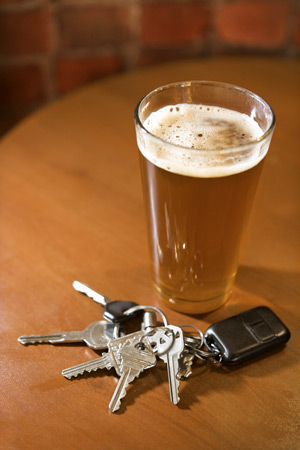Driving and Autos: Driving Under the Influence
Drunk Driving Laws
National statistics revealed that 10,553 people were killed in road accidents due to drunk driving in 2011. The incidence of alcohol-related accidents is known to be increasing in India’s cities due to the growing urban culture and easier access to alcohol.
In India, the legal limit for driving is a blood alcohol limit of 0.03 grams per 100 milliliters. Driving at or above that level is considered to be driving under the influence. Drivers testing below this limit may be warned, but would not be charged.
The minimum legal age to learn to drive automobiles in India is 18. A person can legally drink alcohol from the ages of 18 to 25, depending on the state.
Sobriety Test
If you are stopped by the police under the suspicion of drunk driving, you are required to take a Breathalyzer test. It is a criminal offence to refuse to take the test, although punishments vary by state, with the most severe being the impounding of the vehicle and revocation of the driver’s license. If you fail the test or the police believe for other reasons that your driving is impaired as a result of drinking, you can be arrested. In road accidents drivers can be tested with a screening Breathalyzer. With serious injuries or death, generally blood tests are taken.
Random roadblocks are very common in urban areas and particularly in the vicinity of popular nightspots.
Penalties for Driving Under the Influence
Any driver whose blood alcohol values are measured to be above the limit is booked under a “first offense.” The punishment consists of a fine and a maximum of six months’ imprisonment. For repeat offenders, the fine and prison sentence increase in severity. Where a driver is found to be heavily drunk with alcohol levels over 0.15 grams per 100 milliliters of blood, the penalty is a severe fine and two years’ imprisonment, even if it is a first offence.
Drug Laws
India does not randomly screen drivers for drugs, but drivers involved in accidents may have to provide blood samples, which are sent to forensic laboratories for further testing. Where the presence of drugs in a driver’s system is detected, the person can be charged under the Narcotics Drugs and Psychotropic Substances Act. Depending on the exact levels detected, a prison sentence of 10 to 12 years may be imposed.
Social Attitudes toward Drinking
Cultural attitudes toward alcohol consumption vary widely across India, with some states (Gujarat, Manipur, Mizoram, and Nagaland) prohibiting consumption altogether. Advertising alcoholic beverages is banned in India, and there are several “dry days” throughout the year where alcohol cannot be consumed. These are usually major religious festivals or occasions but also include other national holidays.
There has been an increase in the levels of urbanization in India in recent decades, which has resulted in greater consumption of alcohol for social and business purposes. Alcohol has become more freely available and is sold in supermarkets and can be delivered to homes. This has resulted in an increase in the incidence of drunk driving, with the police in some cities claiming that up to 40 percent of drivers stopped at night are over the legal alcohol limit.
Article written for World Trade Press by Paul Giess.
Copyright © 1993—2025 World Trade Press. All rights reserved.

 India
India 